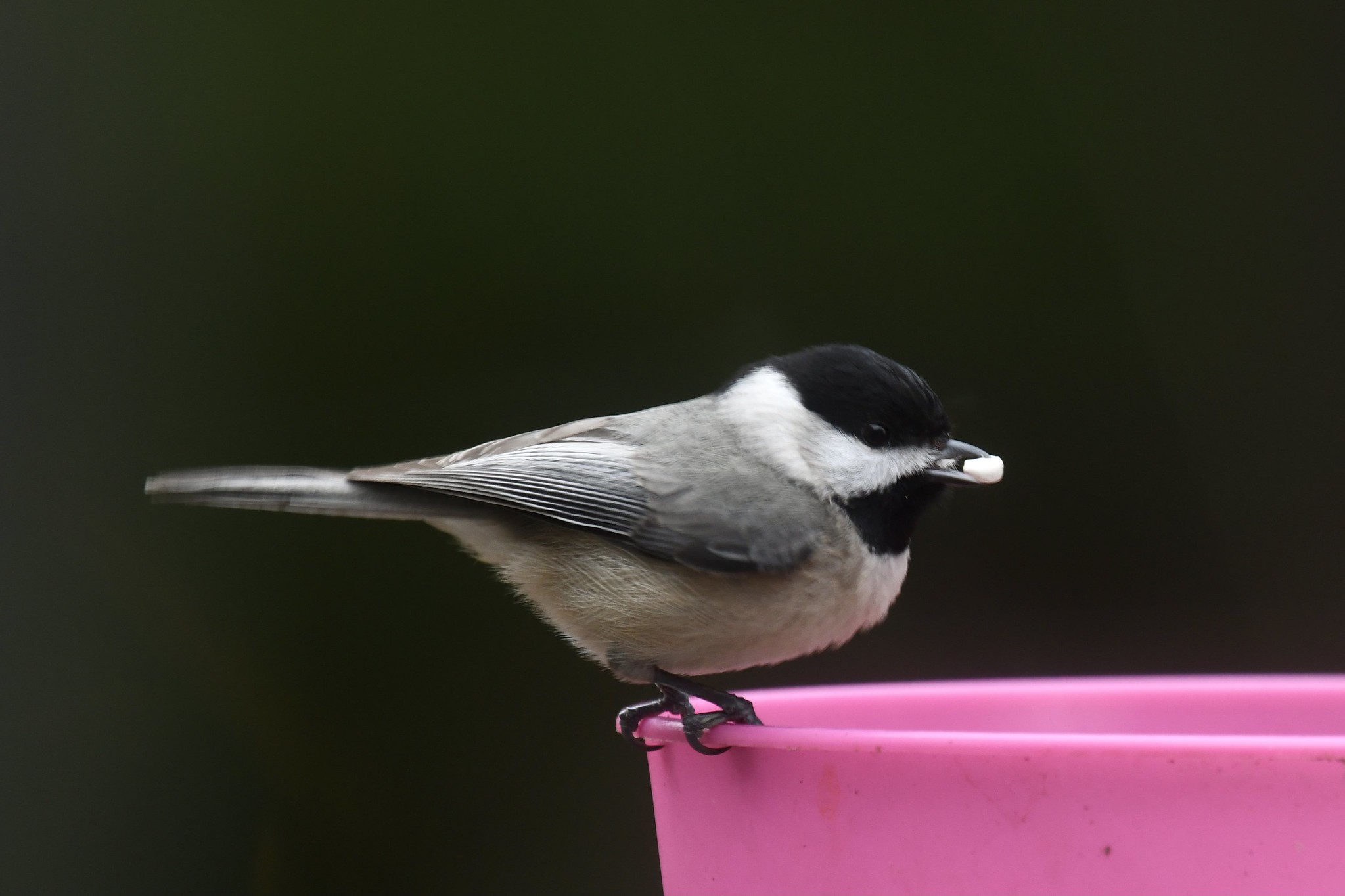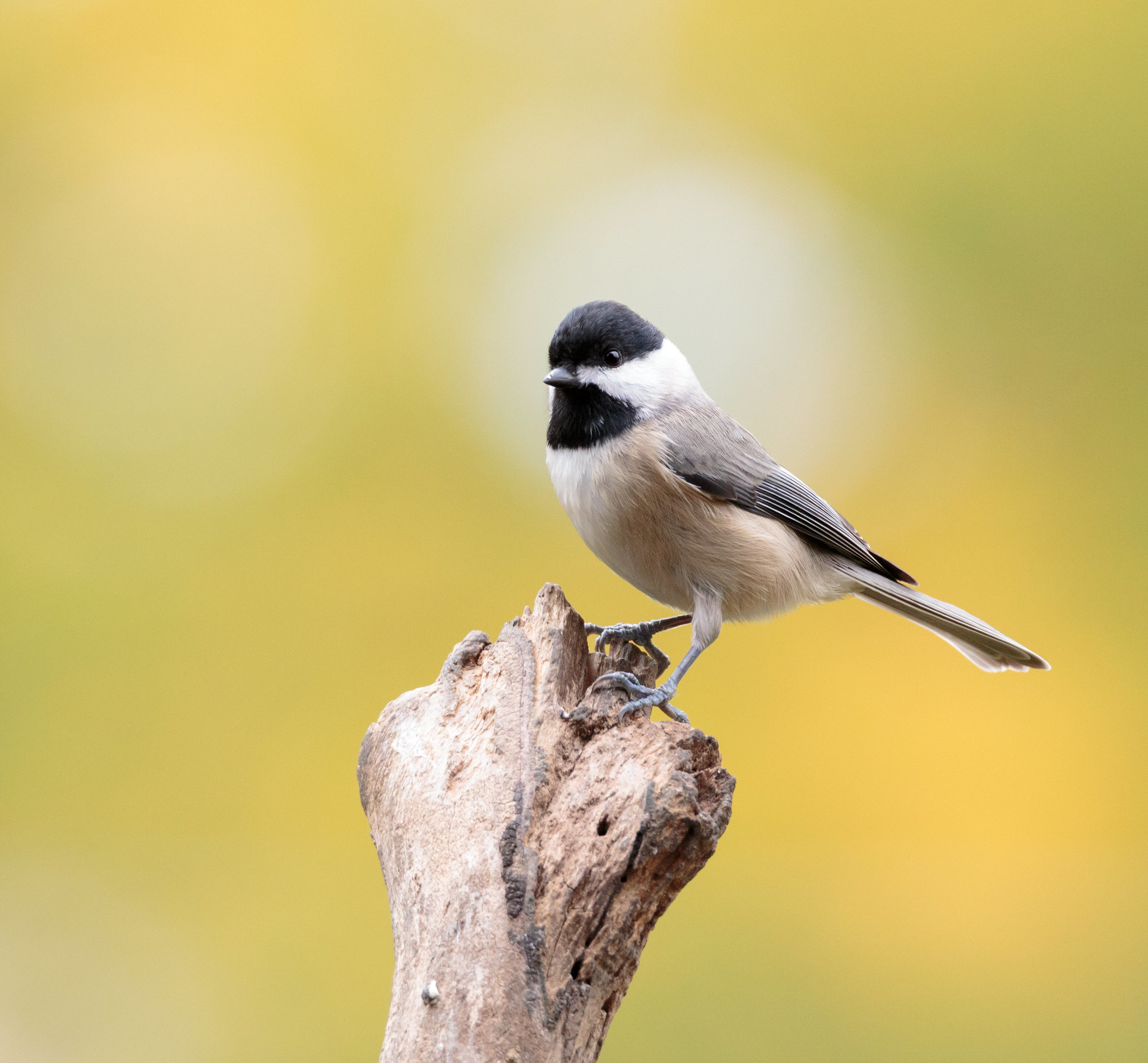Looking to attract Carolina Chickadees to your backyard? These small and adorable birds can bring joy and entertainment as they visit your feeder. Carolina Chickadees are inquisitive and not easily scared away, making them a perfect addition to your yard. They love black oil sunflower seeds and suet, especially in winter. Providing them with the right kind of feeders, such as hopper or tube feeders, can attract them easily. Additionally, they enjoy bird baths and may use nest boxes. By following these tips, you can create an irresistible environment for Carolina Chickadees in your backyard.

Why attract Carolina Chickadees to your bird feeder?
Carolina Chickadees are a favorite feeder bird throughout the United States, known for their cuteness and inquisitive nature. Attracting these charming birds to your yard can bring hours of entertainment and joy.
Carolina Chickadees’ Uniqueness
Carolina Chickadees are the smallest chickadees in North America, making them especially endearing. Their small size allows them to access various feeders and feed from window feeders, allowing for up-close observation.
Fearless and Non-Timid
Unlike some birds, Carolina Chickadees are not easily scared away from your yard when you are outside. They are known to be inquisitive and will continue to visit your feeder even with human presence.
Year-Round Residents
Carolina Chickadees are year-round residents, meaning that once they start coming to your bird feeder, they will be present throughout all seasons. This constant presence adds a touch of liveliness and beauty to your yard throughout the year.
Peaceful Coexistence
Carolina Chickadees are not belligerent and do not engage in fights with other birds. They tend to be a bit shy when other birds are present at the feeder, ensuring a peaceful coexistence among different bird species.
What foods will attract Carolina Chickadees to your feeder?
Carolina Chickadees have a diverse palate and will readily eat from a variety of bird seeds. However, there are some favorites that will be sure to attract them to your feeder.
Black Oil Sunflower Seeds
Carolina Chickadees love black oil sunflower seeds. They will carefully take one seed at a time and fly away to crack it open and eat it away from the feeder. These seeds are a staple in their diet and a surefire way to attract them to your feeder.
Mixed Seeds
If you prefer to offer a mixed seed blend, Carolina Chickadees will happily eat any sunflowers, peanuts, and nuts included in the mix. They tend to leave the smaller millet seeds for sparrows. To attract a variety of birds, consider using Wagner’s Songbird Supreme mixed bird seed, which has a high percentage of sunflower seeds and is free of cheap filler seeds.
Suet
Carolina Chickadees also enjoy suet, especially during the winter months. Adding St Albans Bay Suet blocks to your feeders can be a great way to attract these birds. The suet comes in various flavors, such as peanut and berry, and fits into special suet cages designed to prevent larger birds or mammals from stealing the entire block.
Mealworms
In the summer, Carolina Chickadees may switch to primarily eating insects. Offering live or dried mealworms can entice them to visit your feeder more often during this season.
What kind of feeders do Carolina Chickadees like?
Carolina Chickadees are not picky when it comes to feeders and will eat from any type. However, certain feeder designs can be more advantageous for attracting them.
Hopper Feeders or Tube Feeders
Hopper feeders or tube feeders are excellent options for attracting Carolina Chickadees. These feeders allow smaller finches, chickadees, and nuthatches to access the food while making it more challenging for larger birds to feed. Consider using an iBorn tube feeder, which offers smaller perches and lacks a tray, reducing the presence of larger birds such as House Sparrows, Starlings, Doves, and Jays.
Suet Feeders
To offer suet to Carolina Chickadees, you will need a special suet feeder that locks the suet block into a cage. This design prevents larger birds or mammals from stealing the entire block. The Nature’s Way Upside-down suet feeder is a popular choice among bird enthusiasts, allowing easy access for chickadees, nuthatches, bushtits, and woodpeckers while deterring starlings, blackbirds, and jays.
Where to place your bird feeder for Carolina Chickadees
When it comes to placing your feeder for Carolina Chickadees, it’s important to consider their size and behavior around other birds.
Separate Feeder for Sunflower Seeds
Carolina Chickadees are tiny birds that may struggle to access sunflower seeds at crowded feeders. To ensure they have easy access, consider placing a separate sunflower seed feeder at a quieter location away from larger sparrows.
Small Feeders on Deck Railings and Window Feeders
Carolina Chickadees are known to visit small feeders placed on deck railings or window feeders. These locations provide them with a sense of safety and allow for even closer observation from indoors.

How else can you attract Carolina Chickadees to your yard?
Besides offering food, there are other ways to attract Carolina Chickadees to your yard and provide them with a comfortable habitat.
Birdbaths
Carolina Chickadees will visit birdbaths if they are not too deep or slippery. Providing a shallow and small birdbath with a rock or stick for perching can attract these birds, allowing them to quench their thirst and clean their feathers.
Nest Boxes
Carolina Chickadees will use nest boxes if provided. Look for nest boxes with an entry hole size of 1-1/8 inches, slightly smaller than many other bird nest boxes. Offering suitable nesting sites can entice Carolina Chickadees to stay in your yard and potentially raise their young.
Problems with Carolina Chickadees: If you have attracted too many to your feeder
Attracting Carolina Chickadees is generally a delight, but there may be instances where their presence becomes overwhelming.
Caching Behavior
In the fall, Carolina Chickadees, along with nuthatches and jays, engage in caching behavior. They hide or bury sunflower seeds in crevices, holes, or even underground. While this behavior is fascinating to observe, it can lead to excessive seed consumption if too many birds are frequenting your feeder. If you notice excessive seed consumption, try rationing by limiting the amount of seeds you provide after noon.

Carolina Chickadee FAQ
Here are some frequently asked questions about attracting and feeding Carolina Chickadees:
Q: How can I attract Carolina Chickadees to my feeder?
A: To attract Carolina Chickadees, offer black oil sunflower seeds, mixed seeds with sunflowers and peanuts, suet, or mealworms. Place feeders in quiet and accessible locations, and provide shallow birdbaths and nest boxes.
Q: What other birds will be attracted to the same feeders as Carolina Chickadees?
A: Carolina Chickadees often share feeders with other small birds such as finches and nuthatches. Depending on your location, you may also attract sparrows, jays, woodpeckers, and bushtits.
Q: How can I prevent larger birds from monopolizing the feeder?
A: Using feeders with smaller perches and no trays can discourage larger birds from accessing the food. Tube feeders and specialized suet feeders are good options.
Q: How can I encourage Carolina Chickadees to nest in my yard?
A: Offering suitable nest boxes with a 1-1/8 inch entry hole size can attract Carolina Chickadees. Place the boxes in quiet and secluded areas to provide them with a safe nesting site.
Related
- Why aren’t birds coming to your feeder? First in series: Irresistible! Attract Mourning Doves to your feeder
- Irresistible! Attract House Finches to your feeder

Legal Disclosure
As an Amazon Associate, the author earns commissions from qualifying purchases mentioned in this article. Thank you for your support.
Leave a Reply